I typed a command into my Minecraft game. A wooden box began building itself in front of me. Once it was fully assembled, my player climbed on top of the box and threw an egg into it. An ocelot spawned on the ground and some text appeared on the screen: Turn away now. Experiment starting in 3… 2… 1….
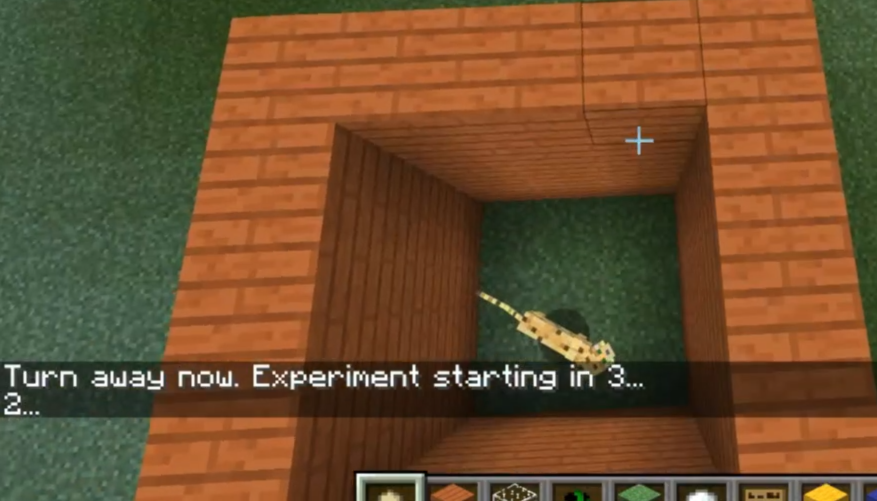
My player turned around and jumped off the ledge, so she was no longer looking inside the box.
“What are you doing?” Zac asked.
“It’s Schrödinger’s cat!” I beamed. “Or, more accurately, Schrödinger’s ocelot. I coded up a few Minecraft mods when I was bored the other day. This one mimics the double-slit and quantum eraser experiments. Then I have others for entanglement and relativity and other fun things.”
Zac sighed. “You have successfully out-geeked me. I admit defeat.”
“It’s okay.” I pat him on the back. “You have other things going for you.”
“Like what?”
“You have nice… stubble.”
He squinted. “My stubble is orange. I’m a ginger, Nikki. Even sperm banks have told my brethren to stop donating their genetic material because nobody wants it.”
“What?! It’s unique!” I tickled his chin. “And if you ever get married one day, you’ll know for sure that she isn’t superficial.”
“Fuck you,” he laughed.
“Oh, don’t do that. It would be weird and awkward and we’ve been friends for far too long. Also, our ocelot is waiting.” I pointed to the game, where my player was still staring off into the distance. She turned around to face the outside of the box.
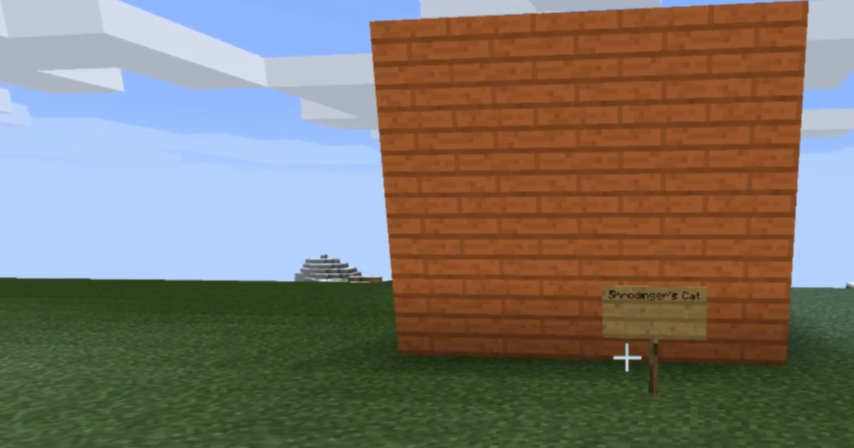
“Right now,” I continued, “my player thinks there is a cat inside that box. But there isn’t a cat inside that box, because the box doesn't have three dimensions. There is no depth to the box. There is nothing behind that wooden wall, because ‘behind’ doesn’t exist. From my player’s perspective, the box appears to be three-dimensional, and that’s why she intuitively believes there is a cat inside the box right now. In reality, the game is rendering information in such a sequence that the extra dimensions of space and time emerge from it. Are you following?”
Zac nodded.
“Good. We’re going to pretend that there is a radioactive device inside the box with a 50 percent probability of poisoning the cat. So, right at this moment, is the cat alive or dead?”
“Both,” Zac shrugged. “Her state can change up until the moment you observe her.”
“Exactly. Right now, the cat exists in a superposition in the codebase. She is in all possible states up until the moment my player observes her. When that happens, the cat has to choose one particular state so the computer can render the correct information on the screen. My player can’t observe a cat that is both alive and dead.
I’ve actually written some code that tells the computer to randomly pick a state — either alive or dead — the moment I look inside the box. If she is alive, I will see her body rendered on the computer screen. If she is dead, I will see no cat at all.”
I moved my player towards the box and broke through the wall. The cat had completely disappeared.
“She’s dead,” I said matter-of-factly. “If this were happening in real life, the inside of the box would even be back-loaded with a history to make it look like the cat died five minutes ago. In fact, her death was only decided upon the moment I looked inside the box.”
“What if you put a video camera in the box?” Zac asked. “Would the state of the cat be decided when the camera starts filming, or when your player observes the footage?”
“Let’s run the experiment.” My player spawned another ocelot inside the box, then exited the area. She placed a single block of clear glass on the ground.
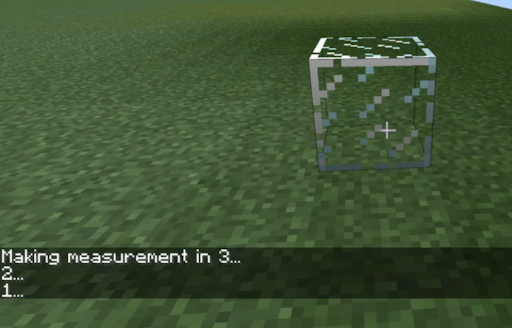
Some text immediately began printing on the screen: Making measurement in 3… 2… 1…. A moment later, the block turned green. A measurement made message appeared.
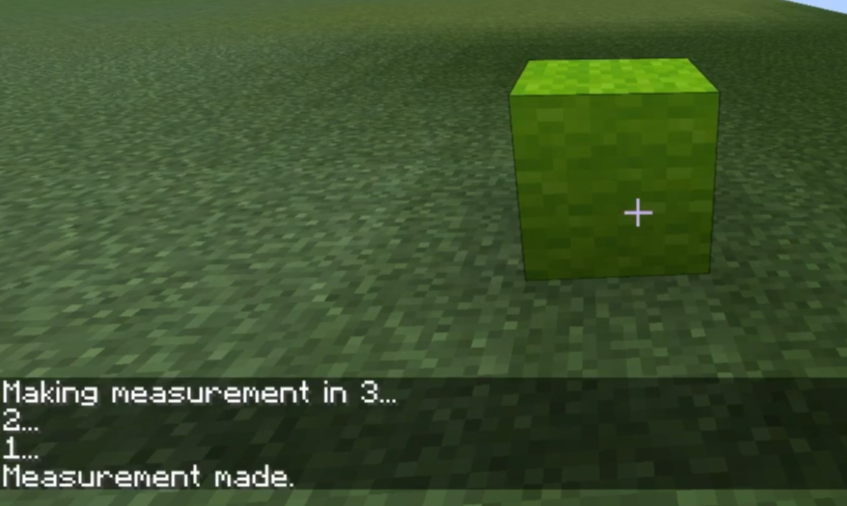
“The cat is alive,” I said to Zac. “The clear glass block represents a measuring device, like a video camera. When the measuring device captures information on the cat’s state, it will turn green if the cat is alive or red if the cat is dead.
Think about information as something that entangles with an observer. When the measuring device observes the cat, information about the cat’s state entangles with the measuring device. When my player observes the measuring device, that information entangles with my player. Then, when my player checks inside the box, the cat has to be alive. Her state was ‘locked’ into reality the moment my player’s consciousness entangled with the information on the measuring device.”
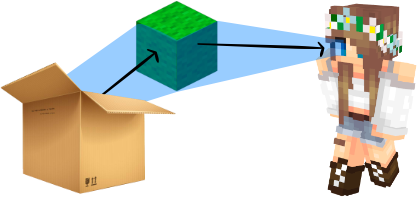
My player turned around and looked inside the box. The cat was, indeed, alive.
“Hmm…” Zac mused. “So if I make a measurement, but then erase the measurement before I have a chance to observe the results, the information about the cat’s state hasn’t entangled with my consciousness. That means the cat is still in a superposition, right?”
“Yep,” I said. “Until information entangles with your consciousness, the cat can be in all possible states for you. This is how our physical reality appears to function.”

